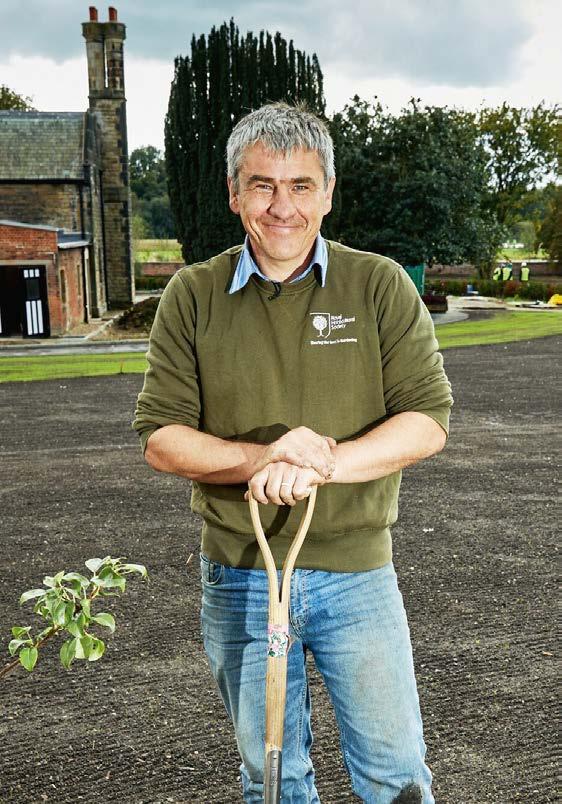
3 minute read
Last Word The death of a pear tree has
Coming Full Circle
The death of the beloved pear tree that watched over the formal garden at Morville leads Katherine Swift to consider the beauty of imperfection and impermanence
Iwrite this in January, as the sleet and snow comes skirling down sideways between the house and the heavy-boughed yew tree opposite. Snow has bookended my life: the winter-long drifts of 1946-7 at my birth and now this fi tful blast, coming and going as the temperature alternately hovers and dives.
Last April I made a bargain, amid the incandescent white blossom of the pear trees, the air full of the drifting white petals of damson and plum.
There had never been such a spring. In the silence of lockdown, time stood still. It was like the silence of a perpetual Sunday morning, or a day of deep snow when the garden paths are obliterated and all traffi c on the road stops; or the fi rst day of the summer holidays when I was a child, with no people, no cars, just the countryside and the trees heavy with leaf and all the long day just to wander and look at water meadows and horses knee deep in buttercups and the dark brown river. If this was to be my last spring, I thought, I’d settle for this.
Spring for me is always, has always been, about pear blossom. There’s a photograph of the garden dating from my fi rst April here, Spring 1990, with the yew hedges just nine inches tall, freshly planted, the newly sown grass white with hoarfrost, and the whole acre-and-a-half as fl at and empty as a billiard table with the exception of a single old pear tree, tall as the house, encrusted with white fl owers – frost and blossom intermingling in the cold air.
When I fi rst approached the National Trust about making a garden here, I was off ered permission to remove it: ‘You can’t leave a tree like that, off -centre, in a formal garden.’ But I made a garden plan that folded round it, incorporating it into the outlines of the new garden as a reminder of what had gone before. With its twisted trunk and shattered crown it became the glory of the garden, a living example of wabi-sabi (the deliberate fl aw, the treasured imperfection that reminds us of the impermanence of everything); the question most asked by visitors became: ‘What is that wonderful old tree?’
Loved cats were buried at its foot; blackbirds annually feasted on its fallen burgundy-and-gold fruit; its leaves each autumn were the fi rst to turn, butter-yellow, falling with the fi rst gales of winter. It became the calendar-marker of our years.
Then, last summer, the tree, having fl owered its heart out, died. We had seen it coming. Over the years it had dropped bigger and bigger branches. Sam, who came to take it down, worked so neatly, so full of respect for the tree and the part it had played that, when he had fi nished and the wood had been taken away, there was not a mark on the grass where the trunk had fallen, only an absence in the air.
Before he cut it down, he climbed to the top and took a photograph of the garden from the pear tree’s point of view; as if it had been watching all those years while the garden took shape around it – a green garden with yew hedges, cloister and turf maze, topiary and temple. In the photograph, arching over the garden, was a perfect rainbow, as if to say: all is well. Everything is as it should be. ■





